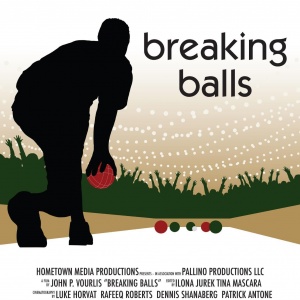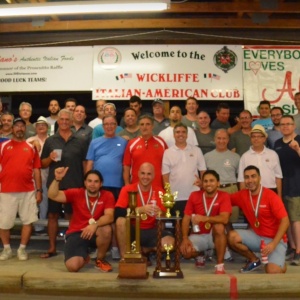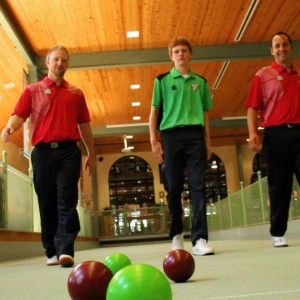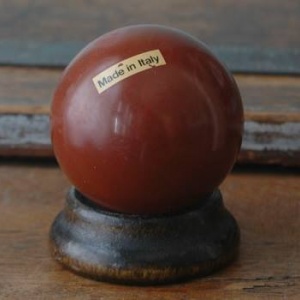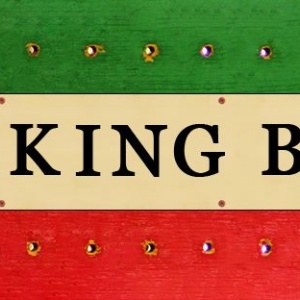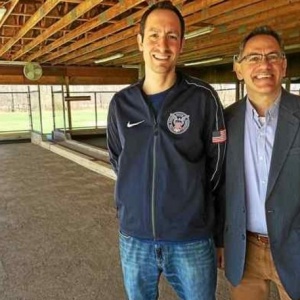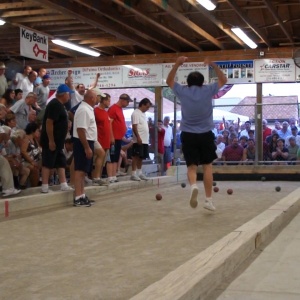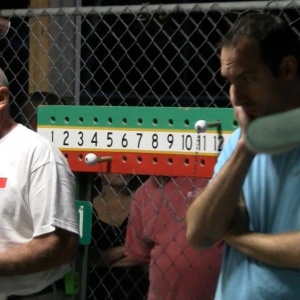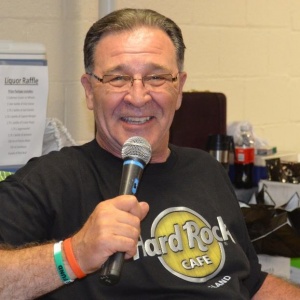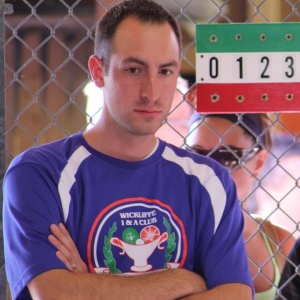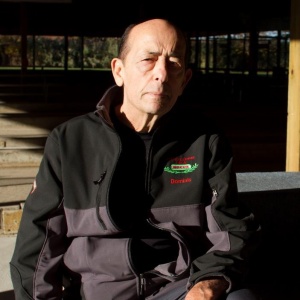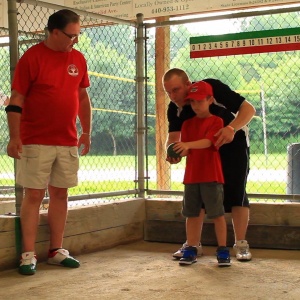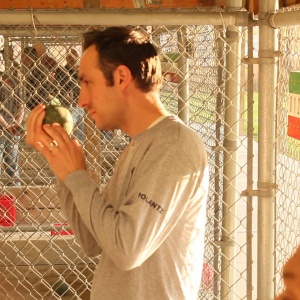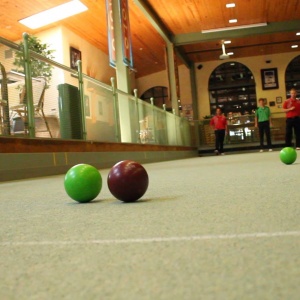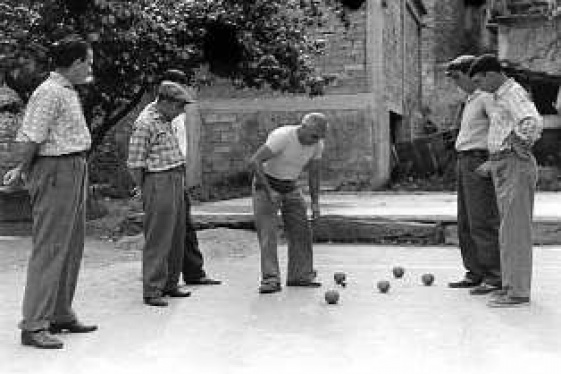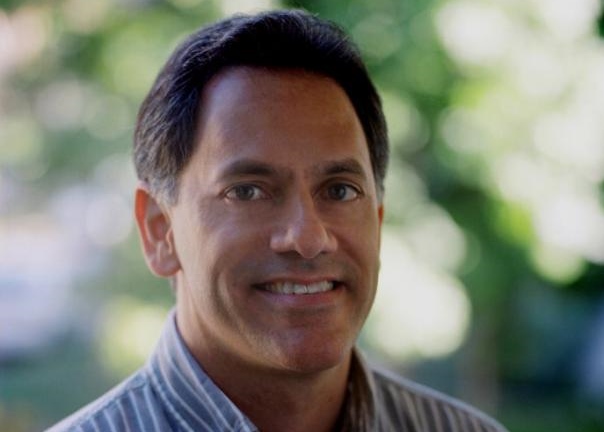
John P. Vourlis (Author and Director of "Breaking Balls")
Le Bocce: lo sport più popolare tra gli italoamericani

Not many Italians who live in Italy know or understand how important Bocce is for the Italian American community. If the breaking news for the Italian Americans is that here in Italy this sport is much less popular among us Italians who live in the boot, the breaking news for us is the extraordinary popularity of Bocce among the Italian Americans.
A new, wonderful documentary by John P. Vourlis, "Breaking Balls", perfectly describes this phenomenon, one of those rare events that see such a huge difference between the Italians who live in Italy and the Italian Americans. I am happy to welcome John here on We the Italians
John, what's your relationship with bocce?
I was born and raised in Wickliffe, OH, and first played bocce when I was a little kid in the backyards at my neighbors the Cirinos, Brochettis and Lorenzos. Wickliffe was and still is full of Italians, and growing up around them, even though I wasn’t Italian (I’m a Greek American), I got to know them and their traditions very well. They were good people. Growing up in Wickliffe in the 70s was like growing up in Mayberry.
I left in 1990 to pursue a career in film, but I came back to Wickliffe in 2010, happily, after spending 20 years in Los Angeles, first studying film at USC Film School, where I got an MFA in Film Production, and then working in the film business. In that summer of 2010, a good friend of mine, Dan Gotti, who I went to school with k-12, asked me if I wanted to go down to the Wickliffe Italian-American Club to watch a bocce tournament. It beat sitting on the couch watching TV, so I said what the heck, why not. I thought I was going to see a bunch of old Italians rolling balls on the grass, but as we drove down to the club, which is only 6 blocks from where I grew up, I saw right away that something was up. We had to park 3 blocks away and traffic for a Friday night in Wickliffe was crazy.
As we walked down the hill to the club, I saw hundreds of people streaming in. When we finally made it in, the place was packed. Music was playing, people were eating and drinking, getting Italian food from local vendor stands, dancing under a covered pavilion to a live band. It was all lit up like a street fair. The whole thing felt like an old-fashioned carnival or church festival. And to top it off there were all these beautiful bocce courts, covered and lit, filled with bocce players competing like this was a March Madness basketball tournament. I was blown away.
I turned to my buddy Dan and said, “This is nuts! What the heck is going on?” He said, “I told you. Bocce.” And I said, “All this? For bocce?” How did I not know about this huge event that was literally right down the street from where I grew up? I started snapping pictures on my old flip phone, and then said the magic words, “Somebody should make a movie about this.”
Flash forward a year. I was trying to put together a feature film to shoot in Cleveland, but the financing was proving a huge challenge. I was getting frustrated. I had just gotten a job as an adjunct film instructor at CSU. I made a short film, but it didn’t satisfy my itch to do something bigger. That’s when I remembered that bocce tournament at the Italian-American Club. I’d never made a documentary before, but I thought I could pull it off, and for much less money than the feature I was trying to fund, so I reached out to some old high school friends, Vince Laurie and Eugene Ciasullo, and asked them if they thought the club might let me follow them around with a camera that summer as they prepared for the next tournament.
They told me to come down to the club and meet the members who ran it, so I did. The first time I saw them, Gino Latessa, Rick & Tony Continenza, and Larry Koval, to name just a few of the guys, they were all dressed in jogging suits, and wearing sunglasses. They looked like they’d walked right out of a Scorsese movie. I was nervous, but within 5 minutes, it was like I was talking to old friends. They agreed to let me film them, and within weeks, I started shooting, using some of my CSU students and former students as crew. It was a long, crazy journey, but almost four years later, we finally have a movie. And we've premiered it at the Cleveland International Film Festival. For a Cleveland boy, born and raised in Wickliffe, I couldn't be happier about that. It's a dream come true.
The film is called "Breaking Balls". I'm very curious, what happens in it?
Breaking Balls is a feature length documentary film that chronicles the game of bocce as seen through the lens of the 30th Anniversary of the Cleveland Challenge Cup of Bocce tournament, one of the largest bocce tournaments in North America, held in Wickliffe, OH, the last weekend of August.
The movie follows three key figures in the lead up to and aftermath of the 30th anniversary of the Cleveland Challenge Cup of Bocce tournament: Gino Latessa, the Tournament Director; Brian Polantz, a world class bocce player from Mayfield, Ohio; and Dominic Olivo, the head groundskeeper at the Wickliffe Italian-American Club.
Gino and dozens of Wickliffe I&A volunteers work tirelessly to put on this huge bocce event which draws upwards of 10,000 spectators and players to Wickliffe every year. 96 four man teams and 14 women’s teams compete annually in the Challenge Cup for $20,000 in prize money, and more importantly, year-long bragging rights as the best bocce players in the Midwest.
Brian played for the United States national team in the 2012 World Bocce Championships in Argentina. We travel with him as he competes in the Midwest summer bocce circuit, playing in the “Triple Crown” events of the World Series of Bocce in Rome, NY; the Cleveland International Bocce Tournament in Mayfield Heights, OH, and the Cleveland Challenge Cup of Bocce in Wickliffe, OH. Brian has won multiple tournaments, including Rome and Mayfield, but he’s never won the Cleveland Challenge Cup of Bocce.
Dominic Olivo, 78, is head groundskeeper of the Wickliffe Italian & American Club, whose outdoor bocce courts are considered some of the finest in North America, if not the world. The Club was founded in 1932 and puts on many social events all year around. The Challenge Cup just happens to be the biggest one. While battling colon cancer, Dominic continues to work tirelessly on his beloved bocce courts, while passing on his knowledge and experience to his young apprentice, Salvatore Continenza. Dominic and his ball busting all-volunteer crew arrive at the courts at 6:30 am and put in two or three hours of work 3 times a week, every week, all season long, from May through August, getting the courts ready for the Challenge Cup, one of the biggest bocce tournaments in North America.
These three storylines all come together at the 30th annual Challenge Cup Tournament, where we learn ultimately that bocce isn’t just a quaint, backyard sport: it’s a unique cultural tradition, a community of players, supporters and fans, who are the soul of this unique sport, nurturing and passing down from one generation to the next their love and appreciation of this special game. They are the heart of this documentary.
Is it true that bocce is the oldest sport in history?
Bocce is an old game whose history goes back to the Greeks and Romans. Today it’s played in various forms mostly along the Mediterranean coast, in Spain, France, Italy, Croatia and Slovenia. In the US and Canada, it’s played mostly by Italian, Croatian and Slovenian immigrants.
Traditionally, you play it on grass or sand courts that are 90 feet long and about 10 feet wide. Nowadays, there are also indoor synthetic courts that let players play all year ‘round. In the old days, bocce balls were carved from wood; today they’re made of metal or most often plastic.
A game can be played between two players, or two teams of two, three, or four players. A match usually starts with the flip of a coin, and the winner gets to throw the small ball, called the pallino by most Italian players, first. You have to place it in a section between mid-court and about 8 feet from the far end of the court.
The side that throws the pallino also gets the chance to roll first. The object is to get your balls closest to the pallino. Once you roll the first ball, the other side gets to roll. From then on, the side that does not have the ball closest to the pallino rolls, until they either get closer or run out of balls. At that point, the other side bowls its remaining balls.
You roll the ball as close as possible to the pallino, which is sometimes called pointing or punto, or you can toss it in the air using an underarm action, sometimes called a volo. A volo shot is generally used to knock either the pallino or another ball away to gain a more favorable position. You can also roll your ball and hit another ball out of the way, and this type of shot is called a raffa shot.
The team with the closest ball to the pallino is the only team that can score points in any frame. The scoring team receives one point for each of their balls that is closer to the pallino than the closest ball of the other team, so you can score up to 4 points in a frame. Games are typically from 7 to 13 points.
Bocce is very very popular among the Italian American community. Why is that?
Bocce is not just a sport, it is a culture - a community of players, supporters and fans - most of whom are Italian American or whose ancestors come from the Adriatic southern coast of Europe. These people are the soul of this unique sport, nurturing and passing down from one generation to the next their appreciation of this unique game. Their love of the sport and the traditions and the camaraderie that surround it are what this movie is all about. They are the heart of this documentary.
The Italians of Wickliffe are a very open, friendly, tight knit, but welcoming group. Most can trace their ancestors to the Campobasso province of Molise, Italy, in the poor, southeast part of the country, where a simple game like bocce is a perfect, and inexpensive way to have fun.
For these Wickliffe Italian Americans, family, culture and tradition are everything, and bocce, which they brought with them from the old country, is a perfect vehicle for nurturing and maintaining these values. The reason it continues to thrive in this area, as the movie discusses, is because the parents and grandparents are passing their love of the game onto their kids, and the kids remarkably are falling in love with the sport, even though it isn’t a mainstream American game.
Is there an interesting or funny anecdote regarding bocce and the Italian Americans you discovered while researching for your movie?
A couple years ago, the club got an email from a guy named Ted Mayfield, inquiring about playing in the tournament. He said he was from Cleveland, Mississippi. The guys thought it was a joke. They thought their friends in Mayfield, Ohio were busting their culliones, so they didn’t reply.
A few days later, they got a call from Ted. He really was from Cleveland, Mississippi, and he had a perfect Southern drawl to prove it. He really did want to bring a team to the tournament. It turns out there’s quite a large Italian American community in the Mississippi Delta region. They came up that summer, and ended up winning the second chance tournament at the Challenge Cup (for teams who get knocked out early). They had such a good time, they now come up every year.
You may be interested
-
2015 Bocce Bash!!
Please join Mia Maria Order Sons of Italy in America Lodge #2813 as we host the 2015...
-
30th Annual Art Holiday Walk, Winter Winter...
Holiday walk hours Friday, 12/5 noon-9pm, Saturday ,12/6 noon-9pm Sunday, 12/7 noon-6pm. S...
-
Bocce with the Brothers
Annual Bocce with the Brothers fundraiser for Capuchin Ministries will be held from 6 to 1...
-
Davide Gambino è il miglior "Young Italian F...
Si intitola Pietra Pesante, ed è il miglior giovane documentario italiano, a detta della N...
-
Games Italians Play: The History of Bocce
You can think of modern bowling as a distant cousin of bocce. In England, they have "bowls...
-
Italian Open's History and Records: A tale o...
For Italians, and Romans in particular, the Open is not just a tennis tournament where cha...
-
Jean Lenti Ponsetto Honored as National Ital...
The National Italian American Sports Hall of Fame is proud to announce its inductees and h...
-
'A useful reset': How Giants OF Michael Confo...
He just turned 30. He bats left-handed. He boasts a career 124 OPS+ — the same as Nolan Ar...





